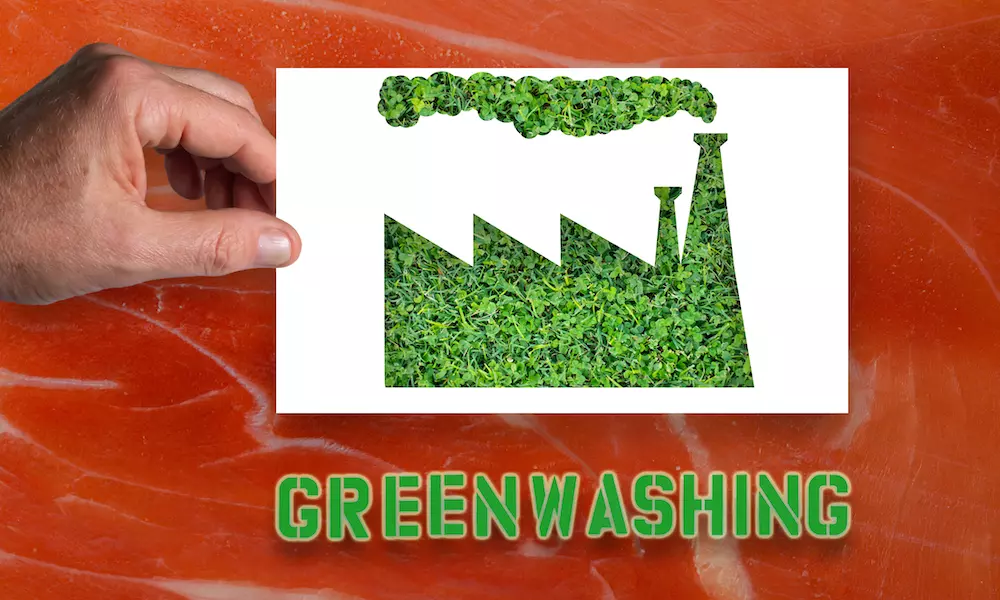Marketing
Greenwashing In Marketing With Examples

The odd trick or two is used in marketing and advertising to sell a product. Greenwashing is one such trick that some businesses use to sell their products. It involves making false or misleading claims about the sustainability of a product or company in an attempt to appear environmentally friendly.
Do you recall when Volkswagon was called out for cheating on emissions tests? Earth.org have ten organizations called out for greenwashing, and it’s just the tip of the iceberg.
Greenwashing is frequently seen among various brands and marketing campaigns, so consumers need to better understand what greenwashing is.
Understanding how marketers use greenwashing will help you recognize it when you see it and know if the brand is genuine or not.
Read this business blog to learn more about this sneaky marketing technique businesses use today.
What is Greenwashing?
Greenwashing refers to deceptive marketing practices that promote the image that a company’s products are environmentally friendly.
Where can you find it? Just about everywhere.
- Advertisements
- Digital Marketing
- Social media marketing
- Product packaging
- Sales staff claims
- Statements on a company’s website
Greenwashing is also known as green deception, eco-deception, and eco-washing.
History
Greenwashing was coined in the early 1980s when environmentalism grew in popularity. The word “wash” refers to the idea that the company is “spinning dirt” by making something look clean when it’s really not. You’ve heard the term money laundering? That’s taking dirty money made from crime and circulating it in the economy to make it clean. Real estate transactions are a standard vehicle for laundering “dirty” money.
How Does Greenwashing Work?
In a nutshell, greenwashing is the act of misleading consumers into believing that an organization’s products or services are sustainable when they are not. Sometimes, the company may not even know they’re committing the act.
Greenwashing can occur anywhere within a company’s operations, including its marketing, advertising, and website. There are various ways marketers can mislead consumers by claiming a product is sustainable when it’s not.
Where Can You Find Greenwashing?
Some of the most common ways that companies use greenwashing to their advantage include making false claims about:
- The product’s ingredients
- Their carbon footprint
- The company’s environmental impact or even failing to disclose the product’s harmful ingredients
Examples of greenwashing in marketing
There are plenty of examples of greenwashing in marketing, and it’s essential to be able to spot them so that you can avoid being fooled.
Product’s ingredients
A company may make false claims about the ingredients in its product or use greenwashing to make its product seem more sustainable than it is.
For example, a cleaning product may be advertised as 100% biodegradable but may contain chemicals that aren’t biodegradable, despite the claims made on the product’s packaging.
Carbon footprint
Some companies may advertise that they are carbon-neutral or otherwise environmentally friendly when they’re not.
Wi-Fi internet providers have been known to falsely claim that they are carbon-neutral, even the internet usage producing missions. –
Some companies may advertise that they are carbon-neutral or otherwise environmentally friendly, but they’re not.
Environmental impact
Don’t be surprised if you learn of a company or a household brand boasting that they are eco-friendly when they’re not.
An example is the oil company Chevron as reported in BusinessNewsDaily, which ran expensive environmental campaigns on TV, radio, and print media yet violated the Clean Act.
Failing to disclose the product’s harmful ingredients
Making false claims about the sustainability of their products while failing to disclose their harmful ingredients is too familiar. For example, a cleaning product may be advertised as biodegradable, but it may not tell that it contains chemicals that aren’t biodegradable.
Why do Companies Use Greenwashing?
Marketers use greenwashing for a variety of reasons. Some marketers may be genuinely concerned about the environment and want to make their products more sustainable. While other marketers may not know they are committing the act of greenwashing.
Plus, with Gen Z getting older and having more purchasing power, some businesses may be trying to appeal to these eco-conscious consumers. Whatever the case may be, companies do it because they know it works. Consumers tend to gravitate toward brands that they believe to be sustainable. This can ultimately lead to more sales and profit for the company.
Conclusion
Greenwashing is a deceptive marketing practice that some companies use to mislead consumers into believing their products are sustainable when they are not.
Greenwashing can occur anywhere within a company’s operations, including its marketing, advertising, and website.
There are various ways marketers can mislead consumers by claiming a product is sustainable when it’s not.
Some of the most common ways that companies use greenwashing to their advantage include making false claims about the product’s ingredients, making false claims about their carbon footprint, making false claims about their environmental impact, or even failing to disclose the product’s harmful components.
Consumers should be aware of the signs of greenwashing to avoid falling for false advertising. Do you have an opinion? Scroll down and add a comment.









